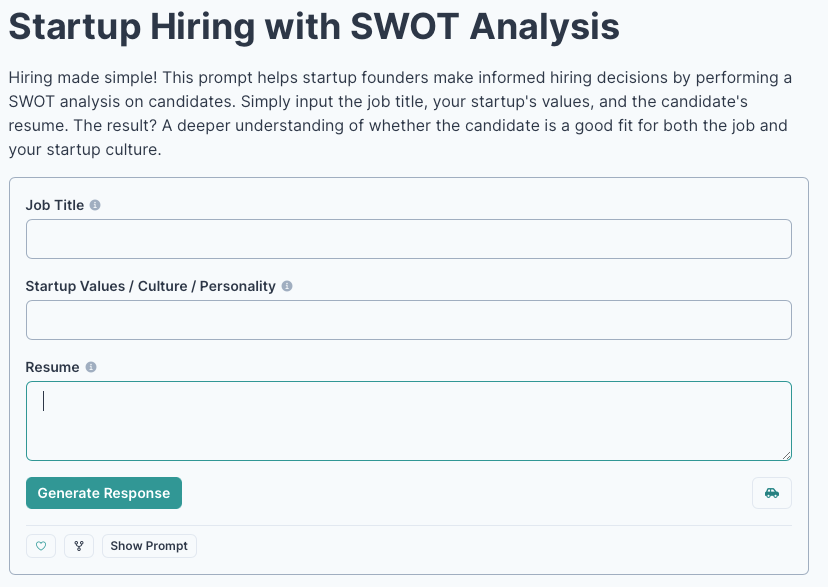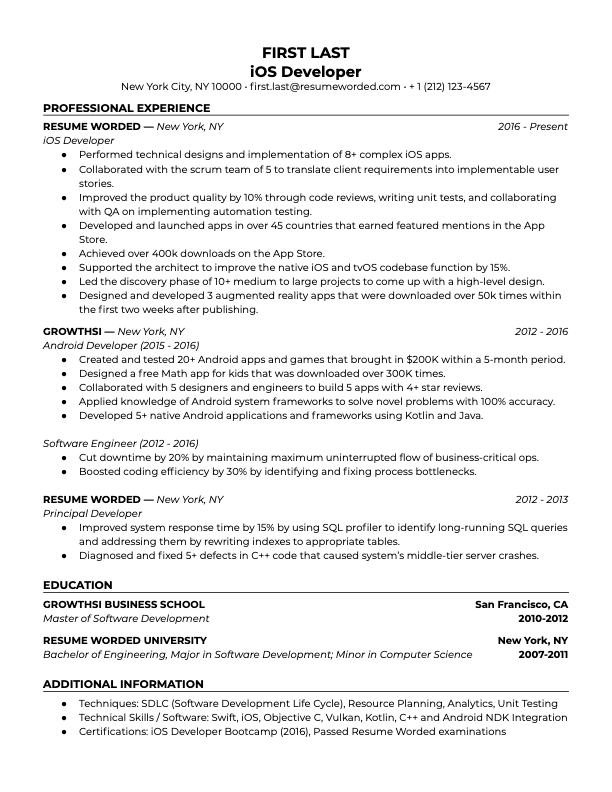How To Start A Company With AI: Text Analysis
by Matthew Collins on Jun 19th, 2023

Introduction
So you want to start a company? Your first port of call might be to browse the internet, find websites with potentially useful information, read lines upon lines yourself, and take actions based on all of that. But with such an abundance of information on the internet, you might find yourself trying to crawl your way out of a deep rabbit hole of your own clicking! Oooff…
It’s 2023. We’re better than this. Let’s use artificial intelligence (AI) to make this whole process easier. More time spent on taking action!
Welcome to article #2 in our exploration of how to start a company using AI. Whereas last week’s article focused on how to summarise large volumes of text (check out summarisation here), this week we’ll explore how to analyse text to take you closer to making meaningful decisions for your new company.
As an aspiring founder, there is a lot of information you’ll have to dissect. Being able to rapidly analyse any text you come across will aid you dramatically in the fast-paced world of starting a company. Indeed, AI analysis can help reduce any cognitive load dealing with difficult stages of your startup.
As a side note, it’s not just me who’s interested in using AI as a cofounder for new great ideas. Mark Zuckerberg, CEO of Meta (a technology company), recently joined MIT research scientist Lex Fridman for a conversation about AI, saying “there’s going to be a lot of amazing products and value that can be created with the current level of [AI] technology” (1). I’m excited to bring value for your AI-empowered journey, by making the technology simple and useful.
Anyway, enough chit-chat. Let’s dive into some specific examples of using AI to analyse text that’s important to us as founders.
On the menu:
- [Intermediate] Hire great talent
- [Advanced] Identify insights from economic / market data
Hire great talent
Tldr; check out how to hire great talent for your startup here!
Prompt: “Give me the 10 main difficulties when starting a startup”
Response: “3. Building a Strong Team: Recruiting and retaining talented individuals who are passionate about your startup can be challenging, especially when competing with more established companies. Assembling a competent team with complementary skills is essential for success.”(2)
It’s no secret that part of bringing your startup into the world is having a highly skilled team of individuals working together to execute your vision. It’s a trust exercise on a grand scale - the success of your idea is in the hands of you and the team that you assemble. To make it easier for trust to form, it is normal for a natural culture to form in a startup, unified by the individual personalities of the team and the shared company values that everyone buys into.
In the early stages, a lot of this notion of culture might not be defined! All that you might have is a set of values that you believe in, and as a possible extension, a culture that you might want to instil. As the quote above suggests, early hires are paramount for the success of your startup, with the potential to add value far beyond the scope of their formal job description. Unfortunately, the frugal nature of early-stage startups means that undergoing lengthy hiring processes is financially infeasible. Furthermore, the time lost is a significant opportunity cost for founders trying to get their ideas out into the real world.
How then can we go about identifying appropriate talent that might fit into our startup’s culture?
Let’s see what AI can do for us.
Ingredients
Alright, we’ll need some inputs to construct a prompt for this use case. Naturally, the low-hanging fruit input is the job that we are hiring for. Next, it would be great for us to share some values or culture that we’re striving for in our startup. Finally, we want to provide a way to paste the resume into the prompt, since resumes are a standardised way of reviewing the experiences of a candidate across all applications.
As for the outputs, we want to have an overview of the merits of a given candidate’s application. To do so, we’ll need to use some framework for how we review the application, so that the reviewal process is standardised. For this prompt, I propose an approach using the SWOT Analysis Framework to analyse the Strengths, Weaknesses, Opportunities, and Threats of a candidate’s match with both the job description and the startup. The reason for this choice is that the framework gives us the chance to consider longer term implications of a hiring decision, by evaluating the future with the lens of both opportunities and threats.
Throw those inputs and outputs together, and here’s the final prompt on LowTech.ai. Notice how you don’t need to worry about the prompt itself - all you need to do is plug in the job title, a list of values / culture / personality that you care about, and paste in the resume.

To liven up this prompt, allow me to return to my exciting UK hoagie startup from last week’s article (here if you need a refresher). My hoagie business needs a mobile application to allow people to order their hoagies in advance. After some market research, I’ve determined that my target demographic primarily uses iPhones, and as such I’m going to focus on ensuring my hoagie store has an iOS app first. To make this a reality, I need to hire an iOS app developer to join my team. It would be great if the iOS developer fit in with the startup’s culture of enjoying exercise and intellectual curiosity.
After posting a job opening for an iOS App Developer, the following resume gets submitted (sample resume from (3)).

Copy-and-paste all the information into the LowTech.ai prompt, and here is the resultant SWOT analysis on the candidate:
SWOT Analysis:
Strengths:
- The candidate has 4+ years of experience as an iOS Developer, with specific experience in designing and implementing complex iOS apps.
- They have a track record of developing and launching successful apps in multiple countries, with featured mentions in the App Store.
- The candidate has experience collaborating with cross-functional teams and translating client requirements into implementable user stories.
- They have a strong technical background, with knowledge of Swift, iOS, Objective C, and other technical skills relevant to iOS app development.
- The candidate has experience in improving product quality through code reviews, unit tests, and collaborating with QA on automation testing.
Weaknesses:
- The candidate's experience in Android development is limited to a one-year period as an Android Developer at GROWTHSI.
- There is no mention of experience or involvement in outdoor or exercise-related projects or applications.
- There is no explicit mention of intellectual curiosity in the resume, although the candidate's technical skills and experience may imply a certain level of curiosity.
Opportunities:
- The candidate's experience in developing augmented reality apps aligns with the startup's value of intellectual curiosity, as it demonstrates a willingness to explore new technologies and push boundaries.
- Their experience in developing apps with featured mentions in the App Store can contribute to the startup's goal of creating successful and widely-used iOS applications.
- The candidate's experience in collaborating with cross-functional teams can contribute to the startup's emphasis on teamwork and collaboration.
Threats:
- The limited experience in Android development may limit the candidate's ability to contribute to projects involving both iOS and Android platforms.
- The lack of explicit experience or involvement in outdoor or exercise-related projects may not align with the startup's value of enjoying exercise and the outdoors.
Based on the SWOT analysis, the candidate's strengths in iOS development and experience in developing successful apps make them a good fit for the job title of iOS App Developer. However, their limited experience in Android development and the lack of explicit alignment with the startup's values of enjoying exercise and the outdoors may require further exploration in the interview to determine if they are a good fit for the startup's culture and values
It worked! The SWOT Analysis framework is really helpful to get a quick glance at the main features of what’s good about the candidate’s resume. The AI is great at finding the information that’s relevant to the given job title, while also seamlessly weaving in some consideration of the startup’s culture/values (e.g. “There is no explicit mention of intellectual curiosity in the resume, although the candidate's technical skills and experience may imply a certain level of curiosity”).
Even better, we can take advantage of ChatGPT’s large 6000 token “context window” to compare more than one resume simultaneously. To do so, you can use this prompt here which has been redesigned to compare more than one resume. All you need to do is simply paste the resumes one after the other into the “Resume” box on the prompt. Easy.
Although resume filtering is quite a known practice (especially amongst larger firms that have fleshed out HR departments), for an early-stage startup, AI is the perfect companion to help a nascent founder make these sensitive and important decisions. In fact, AI is effortless in its ability to interpret your startup’s “vibe” (values, culture, personality), and see if it can find a match within a candidate’s experiences. Importantly, incorporating a SWOT analysis gives you as the aspiring founder the best opportunity to keep a lens on the long-term opportunity that a candidate might have.
Disclaimer: How AI models are generating their impressions or forming opinions is still very much unknown. In fact, understanding how large language models interpret and are activated by prompts is an ongoing research space. To that end, it is important to explicitly state that AI systems may have inherent bias upon which they are trained, bias that we won’t be able to detect. This is naturally an important consideration in the hiring of talent, in which it is essential that bias is eliminated as much as possible.
Find Industry Insights
Tldr; Check out the industry insights prompt here.
Market research is an integral part of what any aspiring founder has to work through to bring a vision to life. Fortunately, it is easy to discover datasets online that may be useful for a founder to understand the market of their startup. One such example is the US Census Bureau, the “principal agency of the U.S. Federal Statistical System, responsible for producing data about the American people and economy” (4). Their collection of data (which can be found here) is ripe for any founder to rummage through and extract the most relevant sources.
However, with such a plethora of information at our fingertips, it is quite cumbersome to not only discover the data, but then also to try and interpret it. This is the basis of the following prompt. Let’s work with the assumption that we have found a dataset that we like, but we’re not sure what insights to glean from it. After all, we’re not all machine learning experts! We’ll be outsourcing some data analysis to our AI-cofounder to help us find meaning amongst the data.
(The specific data used in this example can be found here)
In this example, we will be using data found here on Comparative Economic Characteristics of the Californian economy from 2014 - 18. The goal here is to use AI to extract any insights that might be of relevance to the industry that our startup is in, amongst a variety of parameters such as health insurance enrollment, income levels, and commuting statistics. Check out the prompt on LowTech.ai here.
Amazingly, by only specifying the industry that you want to focus on, the AI is able to pull meaning from the various different columns of variables, interpret numerical meaning, and synthesise the information to form sound insights and recommendations. The output for my focus on the food industry was the following:
To analyze the data provided, let's focus on the insights and recommendations for the transportation industry first.
Insights relevant to the transportation industry:
- Mode of transportation: According to the data, the majority of workers in California (73.8%) commute to work by driving alone in a car, truck, or van. This indicates a high reliance on personal vehicles for transportation. It suggests that a startup in the transportation industry could consider providing services or solutions that cater to individual car owners or address the needs of commuters who prefer private transportation.
- Public transportation usage: Although not as prevalent as private vehicles, public transportation is still utilized by a significant portion of the population in California. Approximately 4.9% of workers use public transportation (excluding taxicabs) to commute to work. This highlights an opportunity for a startup to explore improving public transportation systems, enhancing their efficiency, or providing innovative solutions for commuters who rely on public transit.
- Work-from-home trend: The data shows that 6.0% of workers in California work from home. This percentage has been increasing over the years. This insight indicates a growing trend of remote work and telecommuting. A startup in the transportation industry could consider developing services or technologies that cater to remote workers, such as providing home delivery services, coworking spaces, or virtual meeting platforms.
Recommendations for starting a transportation startup:
- Carpooling platform: Since 10.0% of workers in California still carpool, there is an opportunity to create a digital platform that facilitates carpooling arrangements among commuters. The platform could connect individuals with similar commuting routes to share rides, reducing traffic congestion and providing a more sustainable transportation option.
- Mobility-as-a-Service (MaaS): As public transportation plays a significant role in California, developing a MaaS platform could be a valuable proposition. MaaS integrates various transportation options (e.g., buses, trains, rideshares) into a single platform, allowing users to plan, book, and pay for their trips seamlessly. This would enhance the convenience and accessibility of public transportation for commuters.
- Last-mile delivery service: With the rise of e-commerce and online shopping, there is an increasing need for efficient last-mile delivery services. Starting a startup focused on providing last-mile delivery solutions could tap into this growing market. The service could offer faster and more convenient delivery options to customers, partnering with e-commerce platforms or local retailers to streamline the delivery process.
Not bad…My AI-cofounder was able to present some thoughtful suggestions on how to enter the food industry with a startup, using specific data that is publicly available online to form its judgement.
Conclusion
The volume of data and information that an entrepreneur has to absorb to start a company is both broad and deep. Indeed, the two examples presented in this article cover two independent (but equally important) aspects of the founding process. Text analysis is an incredibly useful skill; it helps us grasp the knowledge we need, and take action accordingly. My hope is that from this article, you may realise that analysis is no longer solely a human skill. In fact, interpretation of information is a handy capability of our AI-cofounder, empowering you to draw conclusions and form impressions in a fraction of the time than without AI! As a tool by your side, AI is the vehicle with which your time-to-market will decrease dramatically, meaning you can spend more energy bringing your vision into the world.
Here are 10 steps to start your company with AI: check it out!
mc
Bibliography
1. https://lexfridman.com/mark-zuckerberg-2/
3. https://resumeworded.com/ios-developer-resume-example
4. https://en.wikipedia.org/wiki/United_States_Census_Bureau